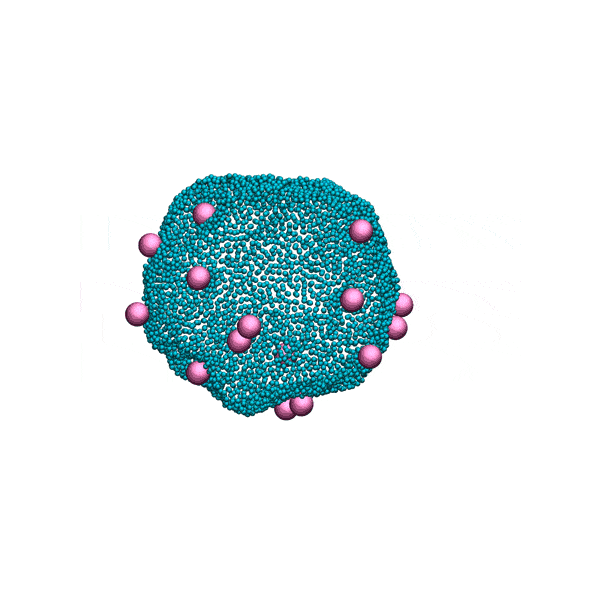Biological membranes are fascinating structures that participate in virtually every biological process. We are interested in a wide range of physical processes involving cellular membranes, such as membrane reshaping, cutting, trafficking, sensing, and membrane-mediated assembly.
Recently we have proposed a model of how ESCRT-III filaments remodel cell membranes into a variety of different shapes by actively changing their geometry. Currently we are studying the role of these filaments in cell division, as well as their active assembly and disassembly. We are also investigating in how membrane mechanosensitive channels cooperatively sense mechanical forces and convert mechanical signals into chemical, and how membrane heterogeneity influences membrane-mediated processes. In our prior work we have shown how viruses or nanoparticles can self-assemble into a variety of beautiful patterns when adhering to biological membranes and induce long tubular protrusions in the membrane, which is a novel route for entry into cell membranes.

Left panel: Linear aggregation of spherical particles on a membrane vesicle. Right panel: Tubulation of membrane vesicle induced by nano-objects.
- C. Bussi, A. Mangiarotti, C. Vanhille-Campos, …, A. Šarić, R. Dimova, M. G. Gutierrez, Stress granules plug and stabilise damaged endomembranes, Nature 623, 1062 (2023).
- B. Meadowcroft, I. Palaia, A-K Pfitzner, A. Roux, B. Baum, A. Šarić, Mechanochemical rules for membrane-reshaping composite filaments, Phys Rev Lett 1129 (26), 268101 (2022).
- L. Harker-Kirschneck, A. E. Hafner, …, R. Henriques, B. Baum, A. Šarić, Physical mechanism of ESCRT-III-driven cell division, Proc. Natl. Acad. Sci. U.S.A 119, e2107763119 (2022).
- A. Paraschiv, T. J. Lagny, E. Coudrier, C. V. Campos, P. Bassereau, A. Šarić, Influence of membrane-cortex linkers on the extrusion of membrane tubes, Biophys J 120, 598 (2021).
- G. T. Risa, …., A. Šarić, …, B. Baum, The proteasome controls ESCRT-III-mediated cell division in an archaeon, Science 369, 6504 (2020).
- A.-K. Pfitzner, V. Mercier, X. Jian, J. M. von Filseck, B. Baum, A. Šarić, A Roux, Sequential polymerization of ESCRT subunits drives membrane deformation and fission, Cell 182, 1140 (2020).
- A. Paraschiv, S. Hegde, R. Ganti, T. Pilizota, A. Šarić, Dynamic clustering regulates activity of mechanosensitive membrane channels, Phys Rev Lett 124, 048102 (2020).
- L. Harker-Kirschneck, B. Baum, A. Šarić, Changes in ESCRT-III filament geometry drive membrane remodelling and fission in silico, BMC Biology 17, 1-8 (2019).
- A. Šarić and A. Cacciuto. Self-assembly of nanoparticles adsorbed on fluid and elastic membranes. Soft Matter 9, 6677 (2013). (Review article.)
- A. Šarić and A. Cacciuto. Mechanism of membrane tube formation induced by adhering nanocomponents. Phys. Rev. Lett. 109, 188101 (2012). (Cover paper of the weekly issue. Highlighted in Physics Synopsis.)
- A. Šarić and A. Cacciuto. Fluid membranes can drive linear aggregation of adsorbed spherical nanoparticles. Phys. Rev. Lett. 108, 118101 (2012). (Editor’s suggestion.)
